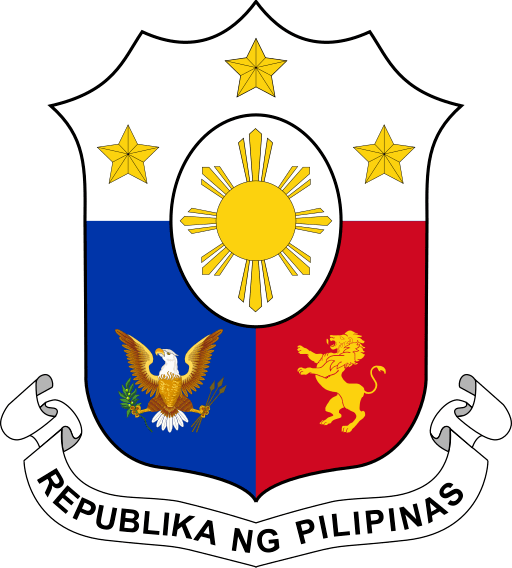- Information
- iGambling
- Blask
- prev
- next
Gambling regulation
-
Online casino:Regulated
-
Online sports betting:Regulated
-
Gambling in detail:
Population
- Population: 102980480 people.
- Official Language: English, Tagalog
- HDI: 0,710
- Salary: $305
- Poverty rate: 55.3%
- Gini: 40.7%
- The believing population: 86%
- Main religion: Christianity (92.6%)
- Second religion: Islam (5.5%)
Harmful habits
- Alcohol: 4.8 litres/year
- Smoking: 22.9%
Internet
- Internet users: 64.1%
- Mobile Internet: 67.4%
- Landline Internet: 31.3%
- Internet speed: 19.5 Mbps
- Country Top Level Domain: .PH
General information about the country
-
Country name:Philippines
-
Code (2-digit):PH
-
Continent:Asia
-
Country level:Tier 2
-
Capital:Manila
-
Country area:300000 sq km.
-
Telephone code:63
-
Currency (code):Philippine peso (PHP)
Geographical features of the country
Administrative division into regions
Autonomous Region: Bangsamoro in Muslim Mindanao.
Administrative region: Cordillera region.
Region (16): Bicol, Eastern Visayas, Davao, Cagayan Valley, Western Visayas, Ilocos, Calabarson, Caraga, Mimaropa, Negros, Zamboanga Peninsula, Northern Mindanao, Soccxsarchen, Capital City, Central Visayas, Central Luzon.
Features of the country
The modern territory of the country was partially or fully occupied by the following states: Spanish Empire, Japanese Empire.
The Philippines is washed by the following seas: Philippine Sea, South China Sea, Sulawesi Sea, Sulu Sea, Molucca Sea, Mindanao Sea, Sibuyan Sea, Visayan Sea, Camotes Sea, Samar Sea.
The Philippines has access to the following lakes: Laguna de Bai, Lanao, Taal, Mainit.
The Philippines owns the islands: Luzon, Mindanao, Samar, Negros, Palawan, Panay, Mindoro, Leyte, Cebu, Bohol, Masbate, Catanduanes, Basilan, Marinduque, Busuanga, Jolo, Dinagat, Tablas, Polillo, Tawi-Tawi and others.
The mountains in the territory are Apo, Dulang-Dulang, Pulag, Kitanglad, Kalatungan, Mayon, Bulusan, Pinatubo.
Volcanoes present in the territory are Apo, Mayon, Bulusan, Pinatubo, and Taal.
Famous caves in the territory: St Paul, Odloman.
Gambling regulation
-
Online casinos:Regulated
-
Online sports betting:Regulated
Read more about regulation
Gambling in the Philippines has a long history - the island nation legalised it as early as the 16th century. In 1975, the law No. 1067-a, which is still in force today, was issued to regulate the gambling market in the country. In the same year, PAGCOR - the state body to supervise the gambling industry and promote tourism - was established. Since then, the country's iGaming industry has expanded significantly, and Manila has aspired to become the centre of gambling in Asia.
Regulatory peculiarities
- The Cagayan and Freeport economic zone does not lend itself to the islands' mainstream legislation. Casinos and online gambling in these regions are only available to tourists. In addition, in the provinces of Cagayan and Freeport, gambling can be played from the age of 18, when in the rest of the country the age threshold is higher at 21;
- All gambling laws in the Philippines are aimed at casino operators, not players. Thus, casinos and BCs registered on the islands cannot offer online services to their compatriots;
- In general, online gambling is legal in the country. Filipinos are allowed to play online poker, online casinos, bet on sports and horse racing with licensed operators. In addition, locals are allowed to gamble on offshore gambling sites.
Recent legislative trends
- Since 2023 year, the current president has been strongly in favour of banning online gambling for all Filipino citizens. However, for now, a fierce regulation of online gambling in the islands is not to be expected;
- The Philippines has fairly lenient sports betting laws, making the market particularly attractive for BC operators.
Given the locals' love of gambling, the Philippine GEO can offer operators a large and lucrative customer base.
The President of the Philippines signed an executive order in early November 2024 that completely bans all offshore gambling activities in the country, including POGOs (Philippine offshore gambling operators that operated both domestically and in the overseas gambling market) and iGaming licensees (IGLs).
The decree, which takes effect immediately, was initiated in response to growing public concern over the continuous crime and social problems associated with online gambling.
On this occasion, the Philippine authorities have envisaged the creation of two special teams:
- The first group will focus on supporting laid-off Filipino workers (their retraining and skills development)
- The second group will focus on shutting down both licensed and illegal gambling operators.
In addition, the country's Bureau of Internal Revenue will be responsible for the prompt collection of the remaining taxes from offshore iGaming operators.
Radical measures by the Philippine authorities are forcing offshore operators to seek new havens for their activities. For example, neighbouring countries to the Philippines, such as East Timor or Cambodia.
Top payment systems
Top payment methods (October 2024):
- gcash
- paymaya
Top slot machines
The most popular games among Filipino players (Autumn 2024):
- Color Game
- Pula Puti
- Pusoy
- Lucky 9
- Tongits
Online Gambling in the country
Target Audience
Gambling is widely popular among the Filipino population. According to TGM Research, 58% of Filipinos have bet or gambled at least once in 2022.
The average age of online casino players:
- 55% are between 18 and 24 years old;
- 28% - 25 to 34 years old;
- 11% - from 35 to 44 years old.
Among the surveyed players betting on sports:
- Men - 44%;
- Women - 34%;
- 22% abstained from answering;
Betting is popular among young people: almost half of bettors are in the age category from 18 to 34 (45%).
There is a great demand for lotteries (Bingo, Powerball):
- 51% are players from 35 to 44 years old;
- 49% - players from 55 to 64 years old.
Online slots are played by 24% of the population, predominantly by 35 to 44 year olds (32% of all players).
Online card games (blackjack, poker) are played by 22% of men and 21% of women. The popularity of card games is observed among all age categories (21%-25%), except for gamblers from 55 to 64 (7%).
GEO Features
The iGaming market in the Philippines is growing strongly due to the liberalisation of legislation and the strategic location of the country. The gambling sector is expected to continue to expand in the coming years.
What is in demand?
- Sports betting;
- Card games (poker, blackjack);
- Slots;
- Lotteries;
- Board games (Mahjong, Pai Gow).
Popularity of bingo among women
In the Philippines, bingo is popular among women, with 33% of participating gamblers choosing this game. This emphasises the need for marketing strategies that specifically target female audiences.
Gambling affiliate programmes that accept traffic from this country
- Blask data from: 06/03/2025
- Population: 118,278,000 people.
- Population growth rate: +1.56% per year.
- Internet users: 58,300,000 people.
-
Urbanization:
Urbanization — 48.3%
-
Languages in the country:
Filipino and English (official)
Tagalog — 39.9%
Bisaya/Binisaya — 16%
Hiligaynon/Ilonggo — 7.3%
-
Age structure:
0-14 — 30.2%
15-64 — 64.3%
65+ — 5.6% -
Median age:
Total — 25.7
Male — 25.1
Female — 26.3 -
Literacy:
Total — 96.3%
Male — 95.7%
Female — 96.9%
-
Real GDP:
2021 — $1.002 trillion
2022 — $1.078 trillion
2023 — $1.138 trillion -
Real GDP growth:
2021 — 5.71%
2022 — 7.58%
2023 — 5.55% -
Real GDP per capita:
2021 — $8,800
2022 — $9,300
2023 — $9,700
Blask Index
Top brands in the country
| Brands | BAP* |
|---|---|
| PHDream | 11,4 |
| PlayTime | 9,7 |
| Casino Plus | 8,7 |
| Bingo Plus | 7,9 |
| ph365 | 7,0 |
| 747 | 3,7 |
- The data for this section was provided by the analytical service Blask.com. Currently, the service's database contains information on 62 countries and more than 2,500 brands. You can view all available countries with Blask statistics at this link.
- Share
- prev
- next














